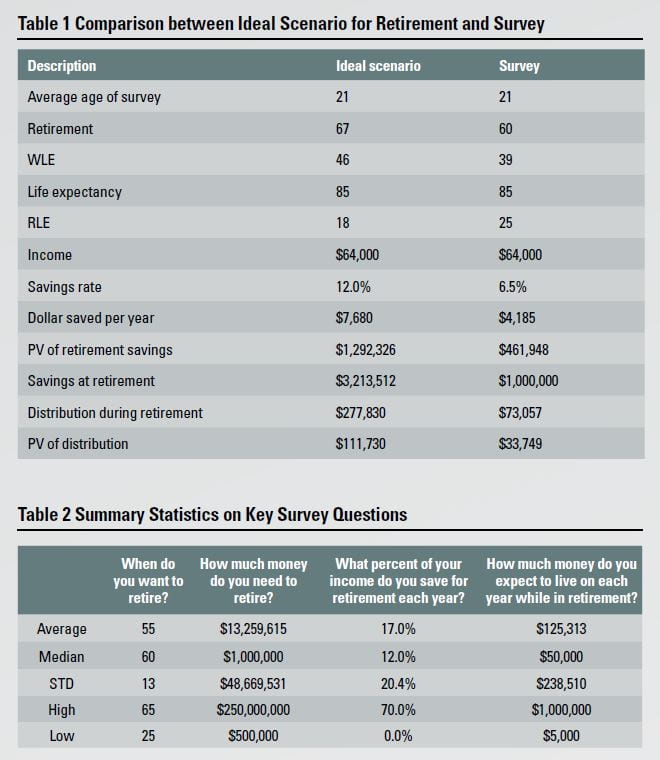R. Gabrielle Swab
Assistant Professor, Department of Management, Towson University
The coronavirus disease 2019 (COVID-19) initiated economic disruptions in both large and small businesses, with a June 2020 study finding 94% of downtown Baltimore businesses were adversely affected by COVID-
19.1 A broader analysis of 5,800 small businesses in the United States finds patterns in mass layoffs, the risk of closure, and financially fragility.2 This is concerning for Maryland, as small businesses in the state employ approximately 50% of our private workforce and are increasingly contributing to economic growth, such as providing over 10,000 net new jobs to our communities in 2016 alone.3
The COVID-19 Emergency Relief $50M Grant Fund provided assistance to small businesses and nonprofits in Maryland,4 but some have still been unable to survive. Maryland businesses have also had to consider updates to both their internal and external processes and operations. This article focuses on those considerations in a local family business in Baltimore County, Kelly & Associates Insurance Group and Kelly Payroll (KELLY).
The KELLY Values
KELLY began in the home of husband and wife, Frank and Janet Kelly in 1976 to help local small businesses acquire affordable health care benefits for their employees. Through an innovative association relationship model, they brought these small businesses together through common industry, trade, and profession to form larger groups, allowing for access to better rates and benefits. Since, KELLY has grown into an enterprise integrating solutions for employers of all sizes in insurance, benefits, payroll, and various human resource solutions, and it continues to operate as a family business.
Like other local organizations, the pandemic has forced KELLY to consider changes to their business practices quickly and efficiently. Frank Kelly III, the eldest son of Frank and Janet, and Chief Executive Officer, said the business has continued to focus on adhering to their core values when making decisions and deciding how to move forward. This focus is on their people, both internally on employees and externally on their clients.
External Considerations
Though KELLY supports a variety of companies and industries nation-wide, the majority of their core clients are located in the mid-Atlantic. By mid-April and continuing into May, the company started to see a decrease in revenue. Since June, KELLY has remained stable. Though not near back to normal, with many clients still struggling, others, such as those in the trucking industry, have seen an increase in business. Restaurants and retailers were KELLY’s largest customer segments to take a hit, with one client going from 8,000 to only seven employees in a matter of months. This particular client has grown back to over 3,000 employees, so they are hopeful these businesses will continue to recover. Accordingly, though mid-Atlantic businesses, such as those they support are still struggling, those which survived are beginning to see an uptick in business.
CEO Frank Kelly III affirms the struggles are not just with current clients, but in obtaining new business. “Our sales team and their current and target clients are having to adjust to new ways of networking and developing relationships”, he mentions. Like other companies, they have been relying more on virtual meetings.
Internal Considerations
In a matter of one week in March, KELLY transitioned their staff from approximately 95% of their nearly 500 employees being in office, to 95% working remotely. The Vice President of Human Resources, Trish Backer- Miceli, attributes this quick transition to their emergency preparedness program, which included tabletop exercises that proactively prepped and tested equipment. Though they previously believed a disruption of in-office operations would likely be due to a weather emergency, this frequently practiced and discussed plan allowed remote work to begin more smoothly than it would have been otherwise.
Chief Operating Officer, Wes Mace, described the internal operational changes in three phases. During Phase 1, the primary focus of the organization was the health and safety of the employees both physically and emotionally. Mace used this phase as an opportunity to get to know his approximately 200 employees working under him on a deeper level. While in the office, most engagement was done in group meetings, with the manager and employee ratio at approximately 1:8. Since going virtual, Mace and his management team have sought to have more one-on-one time with employees. Though remote, the practice ensures their employees are given a voice into how they are being affected personally and professionally. Though he sees no particular pattern in employee apprehensions and adjustment pains, they have continued to be concerned with those employees with young families at home during their work hours. As an additional layer of support, KELLY provides access to confidential emotional and spiritual services through their corporate chaplain, who is affiliated with Corporate Chaplains of America. The partnership provides employees with the ability to speak with a well-trained resource for encouragement, prayer, conversation or for general assistance in dealing with personal situations such as stress or crisis management.
Phase 2 focused on adjusting and reinforcing those disrupted business operations, though it became an ongoing process in evaluating what was working and not working. Phase 3, also an ongoing process, includes evaluating how the business will change going forward. Mace points out that although approximately 20% of their employees are back at the office, the plan is to have more return in the future though they are unsure of exactly how this will permanently change operations, along with the unknown timeline in which COVID-19 will be affecting the Baltimore area.
Moving Forward
In focusing on their employees and clients, despite drops in revenue, KELLY was able to maintain strong customer service and relationships, without a slip in service-focused Key Performance Indicators. They attribute this to their strong culture. The Senior Management Team (SMT) is utilizing Phase 3 to consider the success rate of what they have stopped and started doing as well as what they plan to continue. In answering their questions, businesses may wish to consider some of the following practices now and when moving forward.
Adhere to your values: Though organizational changes may occur during this time of uncertainty, it should not deter from the organization’s mission and value statements, which should drive its culture if aligned properly. The KELLY culture is driven by the founders’ and owners’ values and vision. Organizational culture is further ingrained based on how top managers respond to critical incidents and organizational crises. Accordingly, when faced with issues, management responding in a way that matches the organization’s mission and values sends a clear cultural message.5 Therefore, when KELLY stuck to considering people first, their SMT showed their resilience towards their core values when reacting to a crisis or tough situation(s).
Communicate often: Employees of all levels wish to be heard and valued, and organizations sometimes exacerbate the impact of a crisis due to poor communications.6
Overall, employees may be the biggest determinant in how fast and how well an organization recovers from a crisis. They are not only the first contact with customers both during and after, but employees themselves take note of how the organization communicates during the crisis. A lack of communication during a hardship can come at a high cost, but those leaders who communicate well determine the faith their employees and other business partners will have in them.7 While the KELLY SMT agrees that communication and engagement have been a struggle, they have encouraged middle level management to keep their team(s) engaged and supported.
Set expectations: According to Mace, “Frustration is unmet expectations”, so he has sought to specifically address these with employees. This has presented a challenge, as the timeline for the pandemic is still unknown. However, employee expectations are important and have a variety of accompanying considerations such as motivation levels and job satisfaction.8 Employee’ expectations have changed in light of the pandemic, and leaders should be cautious in expecting business to return to normal, but rather should find a new normal to reshape or reinvent the organization.9 Therefore, though the KELLY team is unsure of the future, they have set expectations that while the day-to-day aspects of life at KELLY might look different, they do have a plan for coming back into the office eventually. However, employee health and safety are concerns, along with the need to be flexible to the personal circumstances of employees and the new work-life balance the pandemic has caused.
Consider new opportunities: While the pandemic has produced much stress, “Necessity is the mother of invention”, as described by Mace. This change in business operations has forced them to consider opportunities and challenges in a way they were unable to before. One such opportunity is in how they recruit new employees. While KELLY had previously focused on recruiting those within the Baltimore area to work within their physical office space, they recognize they are able to successfully conduct remote operations when needed. As they are still trying to find their new normal, they are not currently or specifically looking outside the area for hiring, but acknowledge they are able to widen their recruitment pool if needed.
Though CEO Frank Kelly III misses the ‘synergy and energy’ of being connected in person, the KELLY employees rose to the challenge of remote work. This has allowed the KELLY SMT to see that team meetings or other activities may not be as effective as they once believed, and they are continually searching for ways to keep employees engaged, while eliminating those activities that have proven to be not as productive or necessary.
Final Thoughts
Despite KELLY and other organizations in our community finding best practices that are working for them, this is not without struggles, stress, and a bit of trial and error. Unfortunately, many businesses in our community are still struggling and will likely continue to do so. Support your local businesses and community in ways in which you are able. Small or local businesses may find also resources and information on COVID-19 Assistance at the federal and state level through the Maryland Small Business Development Center.10
References
1https://www.bizjournals.com/baltimore/news/2020/06/30/down-
town-partnership-survey-coronavirus-effects.html
2https://www.pnas.org/content/117/30/17656
3https://cdn.advocacy.sba.gov/wp-content/
uploads/2019/04/23142650/2019-Small-Business-Profiles-MD.pdf
4https://commerce.maryland.gov/fund/maryland-small-business-
covid-19-emergency-relief-grant-fund
5Kinicki, A., & Williams, B. K. (2016). Management: A practical approach. McGraw-Hill Education.
6Goodman, M. B., & Hirsch, P. B. (2010). Corporate communication: Strategic adaptation for global practice. Peter Lang.
7https://www.shrm.org/hr-today/news/hr-magazine/1116/pages/
communicating-with-employees-during-a-crisis.aspx
8Irving, P. G., & Montes, S. D. (2009). Met expectations: The effects of expected and delivered inducements on employee satisfaction. Journal of Occupational and Organizational Psychology, 82(2), 431-451.
9https://www.forbes.com/sites/kathycaprino/2020/04/30/
how-employees-expectations-have-changed-through-the-pandemic- what-leaders-and-hr-officers-need-to-know/#a8107204f898
10http://www.mdsbdc.umd.edu/covid-19-assistance


